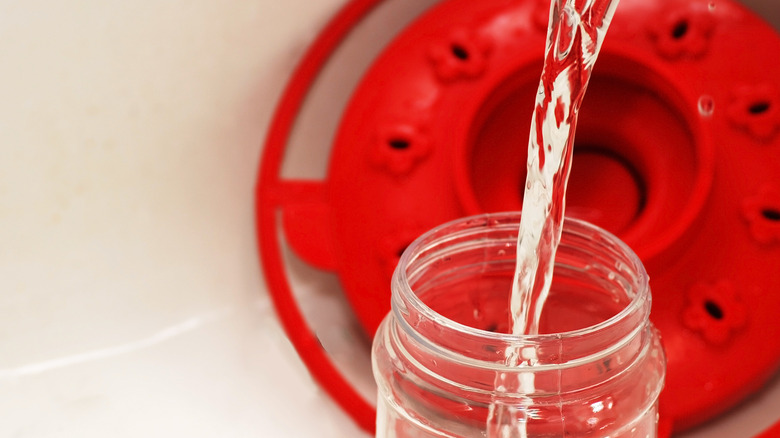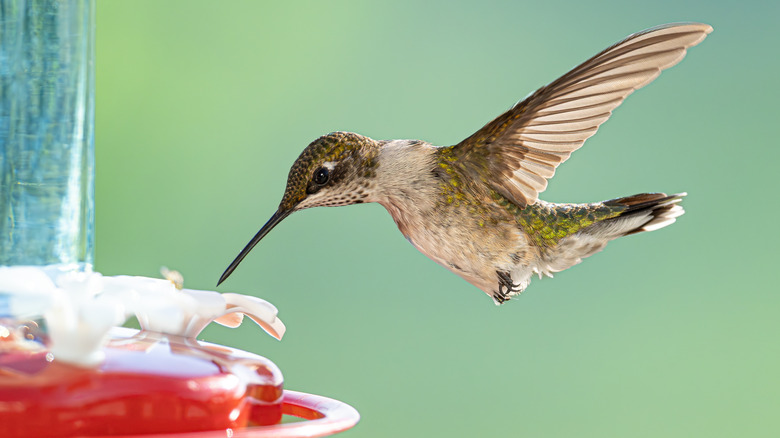Why You Should Think Twice Before Pouring Fresh Hummingbird Nectar Into Your Feeder
While the exact timeframe can vary based on where you live, springtime generally marks the return of migrating hummingbirds in the U.S. Hummingbird season means it's also time to make sure you have enough food sources available to support these small birds. Having a variety of food sources is great, but having a hummingbird feeder is particularly helpful. It's also preferable to make your own hummingbird nectar at home, rather than buying store-bought versions that often have harmful dyes and other additives. Before you pour freshly made nectar into your feeders, though, you must make sure it's at a safe temperature to prevent harm to your favorite backyard birds.
Fresh hummingbird nectar is the preferred type of hummingbird feeder food that is recommended by multiple university extensions and reputable bird organizations. Homemade hummingbird nectar is also surprisingly easy to make on your own. All you need is to boil tap water and add refined white sugar (table sugar), and mix it well until the sugar is dissolved. As a rule of thumb, you can add ¼ cup of sugar per 1 cup of freshly boiled water.
Aside from using the correct type of sugar and making sure it's completely dissolved, you must also let the nectar sit to cool off. Nectar that is too hot can possibly damage the feeders while harming birds that try to eat it. For these reasons, it's not a good idea to immediately pour fresh hummingbird nectar into your feeders soon after making the recipe.
How to ensure your hummingbird nectar is the right temperature
Always allow fresh hummingbird nectar to cool down to room temperature. Allow yourself enough time for the process to complete so that you don't feel rushed and accidentally pour hot hummingbird nectar into the feeders. As a general rule, boil the water for up to three minutes, and then turn off your cooktop before adding the sugar in. You do not need to continue boiling the water once you have added the sugar. Stir rapidly to allow the mixture to dissolve. While the exact cooling time can vary, plan for the process to take up to 30 minutes.
Once you have allowed the nectar to cool to room temperature, you are ready to pour the product into your hummingbird feeders. Any extra nectar you have left over can be refrigerated for up to one week. This is the best way to store extra hummingbird nectar. Just keep in mind that refrigerated nectar will need to be warmed back up to room temperature before adding it to feeders.
It's also vital that you make sure the nectar does not get too hot after it's outdoors. How often you should clean a hummingbird feeder can also depend on the climate. While experts generally recommend changing hummingbird nectar out and cleaning the feeders every other day, you may need to do this more often during the hot summer months. If temperatures exceed 80 degrees, your best bet is to change the nectar out every single day, or even multiple times a day if you're experiencing a heat wave.

